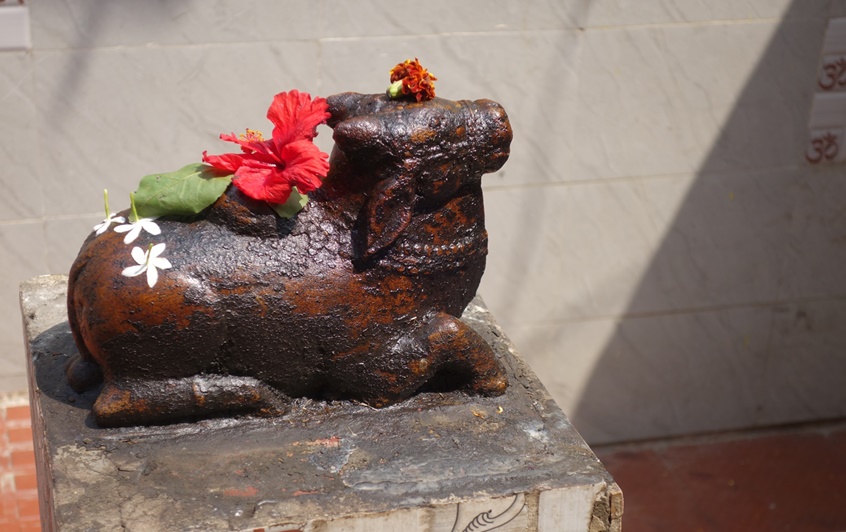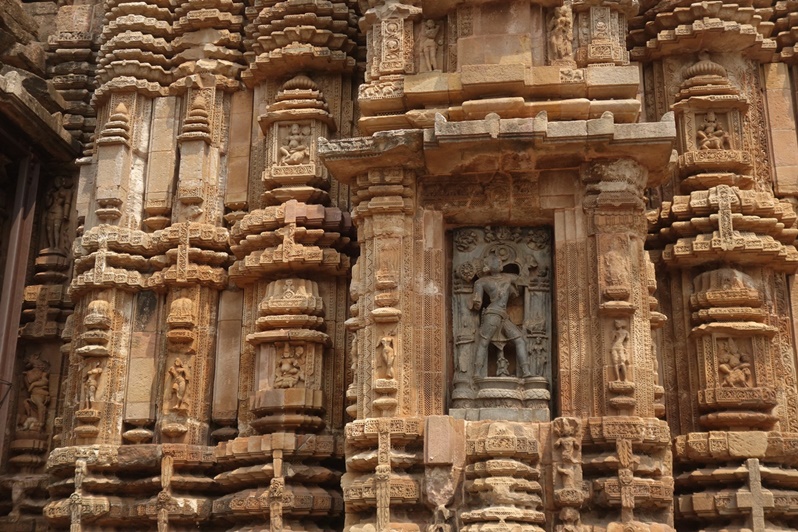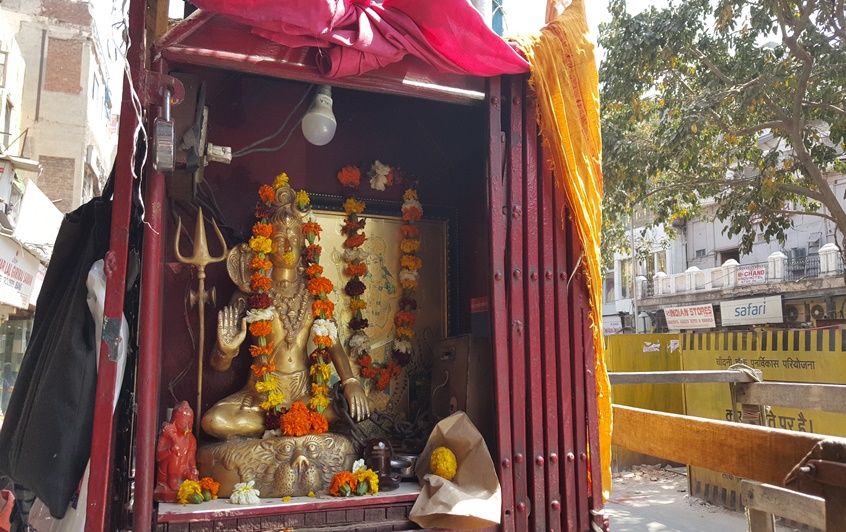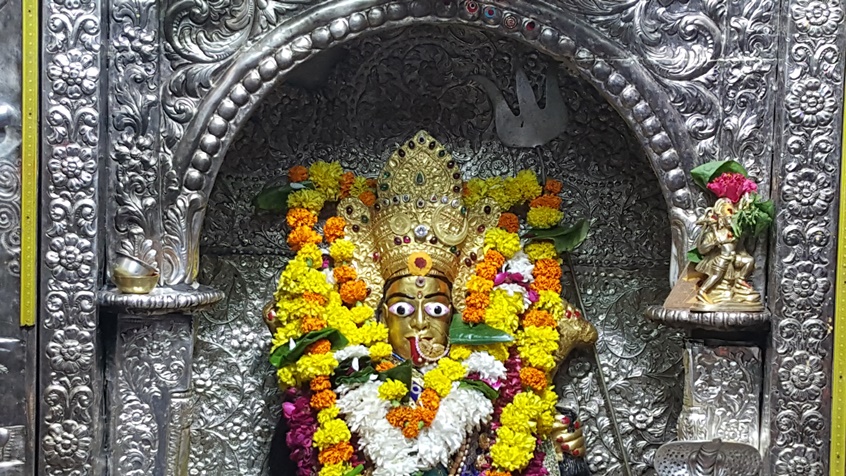
par Bertrand Bellaize, le 02 juin 2020
Art indien : les montures des dieux hindous dans les statues indiennes
Les montures (Vahana) des dieux hindous font partie des éléments les plus marquants des statues sacrées en Inde. Le cygne de Brahma ou de Saraswati, le rat de Ganesh, le taureau de Shiva, l’aigle de Vishnou ...
Les montures : à la fois un emblème et un symbole de la divinité.
Un emblème car la monture peut représenter à elle seule la divinité : la sculpture de Nandi, le taureau peut figurer seule Shiva. Elle en devient la personnification car elle peut le symboliser à elle seule.
Les qualités de la monture sont représentatives de celles de la divinité : force de Nandi, grâce du cygne… et leurs faiblesses révèlent ce que nous devons maîtriser, les obstacles que nous devons surmonter ou les instincts qu’il nous faudra dominer : par exemple la vanité et l’arrogance du paon.
Par ailleurs, il existe également une interdépendance entre la divinité et sa monture : Durga a besoin de sa monture, le lion pour défaire les démons et pour se déplacer.
Mais plus profondément, l’histoire des montures nous montrent, dans certains cas, l’intimité existante entre la divinité et celle ci : Le démon Gajamugasuran fut d’abord l’ennemi de Ganesh. Parmi les légendes racontant l’origine de Mushaka, le rat, l’une d’elle nous apprend que ce démon à force de pénitences acquit la bénédiction de Shiva ce qui le rendit très puissant. Dès lors il sema de nombreux troubles auprès des Rishis et autres divinités qui appelèrent alors à l’aide Shiva. Celui ci envoya son fils Ganesh :à l’issue d’une longue bataille où le démon se transforma en rat pour l’attaquer, Ganesh le vainquit et s’assit sur lui. Gajamugasuran reconnut sa défaite, fit allégeance à Ganesh et devint sa fidèle monture. Ainsi les qualités de l’éléphant et celle du rat, son opposé se complètent à merveille (macrocosme et microcosme). Ganesh va utiliser sa monture pour se déplacer, aller où il ne peut se faufiler.
Dans une autre légende, Ganesh combattit le démon Gajâmukha et à l’issue d’une âpre bataille où Ganesh, dépossédé de ses armes, cassa une de ses défenses qu’il lança sur Gajâmukha qui se transforma en rat. Ainsi Ganesh dut s’amputer d’une part de lui même pour vaincre et non pas détruire son ennemi mais le transformer, le dompter et en extraire le meilleur. Il s’agit de transmuer ce qui apparaît comme négatif pour en faire un allié.
La façon dont la relation entre la monture et la divinité est représentée nous apprend aussi beaucoup sur sa signification : la divinité chevauche-t elle l’animal, est elle accompagnée, soutenue ou figure-t-elle seule ?
Voici les principales montures et leurs significations :
L’aigle figure la force, voire la férocité mais surtout la capacité à se déplacer à grande vitesse : c’est un animal solaire qui représente l’illumination. Lorsqu’il prend un corps d’homme, il se nomme Garuda et devient la monture de Vishnou, alliant la vitesse de la lumière avec la capacité de mouvoir d’un monde à un autre. Il peut nous donner des ailes.
Le chien, il accompagne Rudra ou Bhairava, des formes de Shiva sous son aspect le plus terrifiant . Il représente alors l’impureté, le gardien de l’enfer.
Le cygne indique la connaissance et le discernement, la faculté à séparer le bon du mauvais. Les légendes indiquent que le cygne est capable de séparer le lait de l’eau ! De part sa forme, il évoque la grâce, la beauté.
Le lion bien évidemment symbole de puissance, de force, de souveraineté et donc de protection (justice) : il est ainsi présent sur le blason de l’Inde. Mais le lion ventru (Kumbhodara), fainéant figure aussi l’avidité, qui mène à la luxure, à l’attachement envers ses sens.
Le paon, oiseau majestueux au plumage magnifique, qui se pavane : il représente l’apparence, la superficialité, la vanité en somme l’ignorance grossière. Saraswati en le chevauchant représente la connaissance.
Le rat a besoin d’être dominé par Ganesh car sinon il détruit les richesses, propage les maladies : il symbolise la convoitise, l’avidité. Dompté, il symbolise l’intelligence, la capacité à se faufiler partout, à ne laisser aucun recoin à l’abandon, à explorer tous les espaces : il va dénicher toutes les richesses, dans le sens des attachements, que les fidèles veulent garder notamment les plus précieuses bien conservés dans les recoins de notre esprit.
Le taureau symbolise la force, la puissance et l’ignorance (l’égo, l’individualité) mais aussi l’ensemble des forces instinctives de la nature. Shiva chevauche Nandi, c’est à dire qu’il maîtrise les impulsions (il est alors appelé Pashupati) et notamment celle très puissante de la sexualité. Il les utilise pour transcender, aller au-delà de la forme corporelle (dont le centre sexuel est un aspect primordial). De façon plus vaste, c’est l’attachement à la matérialité qui est figuré par le taureau.
Par contre, Nandi, seul, représente Shiva, c’est à dire l’absolu, la félicité. Son nom signifie « plein de joie ». Il incarne la justice, la droiture.
Le tigre est l'emblème, par excellence, de la puissance de destruction, de force et de férocité. Et c’est aussi un symbole de royauté (il est considéré par de nombreux peuples comme le roi des animaux).
Les « créateurs » des sculptures hindoues et des murtis (images) de façon plus générale ont tenté de transmettre, à travers une vision directe, l’absolu ou du moins une de ses formes manifestées avec un certain nombre de caractéristiques. C’est un enseignement qui se passe de la parole, qui vise directement le coeur, cependant surtout pour nous occidentaux, il peut être nécessaire de comprendre les symboles utilisées dans ces sculptures : les montures en sont un élément primordial tout comme la posture de la divinité, ses attributs, son habillement, sa parure...
Sources
The Book of Hindu Imagery: Gods, Manifestations and Their Meaning : Eva Rudy Janssen
Un et multiple : Sarah Combe
Mythes et dieux de l’Inde : Alain Danielou


